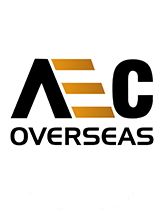Digital learning in education has transformed how students absorb knowledge, stay engaged, and achieve academic success. Whether you’re in high school, college, or pursuing online certification, digital tools are becoming essential companions in the learning process.
So, what is digital learning tools exactly? In simple terms, it’s the use of technology to access educational content outside of a traditional classroom. It’s fast, flexible, and increasingly personalized. With the right digital learning tools materials, students can better manage their time, retain information longer, and work at their own pace.
Get Free Counseling on WhatsApp
Start ChatBut not all tools are created equal. To help you navigate the crowded landscape of digital education, we’ve handpicked five of the most effective platforms that every digital learner should consider. These tools enhance focus, boost productivity, and support modern learning needs.
Whether you’re studying solo or collaborating with classmates, these tools can elevate your digital teaching and learning experience.
Ready To Study Abroad?
Speak to an Expert – 100% Free
Key Takeaways
- Digital learning in education makes studying more interactive, flexible, and personalized.
- A digital learner needs tools that support time management, knowledge retention, and collaboration.
- The top tools provide access to a wide range of digital learning tools materials, from flashcards to full interactive lessons.
- These platforms make digital education accessible across multiple devices and time zones.
- Students benefit most when they combine different platforms based on their learning style and study goals.
Why Digital Learning Tools Matter
In today’s education landscape, digital learning tools is more than a trend—it’s the foundation of how knowledge is delivered and consumed.
What is digital education? At its core, it refers to teaching and learning methods supported by digital platforms. It blends traditional instruction with technology, offering students the flexibility to learn at their own speed and in their preferred format.
Unlike physical textbooks or classroom-only instruction, digital learning tools materials can be updated instantly, personalized for different skill levels, and accessed anywhere. From video tutorials to online quizzes, these tools bring a dynamic edge to studying that traditional methods often lack.
For modern learners—especially Gen Z and Gen Alpha—digital learning is not optional; it’s expected. If you’re not using digital tools, you’re not maximizing your potential.
What Makes a Great Digital Learning Tool?
Before we dive into the top five platforms, here are the core traits of a high-performing digital learning tools:
- User-friendly interface – If it’s clunky, students won’t use it.
- Content variety – Videos, flashcards, quizzes, notes, practice tests, and interactive modules.
- Cross-device compatibility – Must work on mobile, tablet, and desktop.
- Progress tracking – Allows students to monitor performance and stay motivated.
- Collaboration features – Enables group work, discussion threads, or sharing study sets.
With these criteria in mind, let’s explore the top tools every student should know.
1. Quizlet – Best for Memorization and Practice
Quizlet has become a staple in digital learning, especially for students looking to master vocabulary, concepts, and quick facts.
This platform allows users to create flashcard sets and study them using different modes: matching games, spelling practice, and mock tests. For digital learners who need repetition and active recall, Quizlet is a game-changer.
Why It Works:
- Simple interface with minimal learning curve.
- Offers collaborative features—students can share flashcard sets.
- Great for visual and auditory learners thanks to images and audio options.
When to Use It:
Ideal for subjects requiring memorization, such as biology, history, or language learning. It’s especially useful when preparing for standardized tests like SATs, ACTs, or GREs.
2. Google Workspace for Education – Best for Collaboration
Formerly G Suite, Google Workspace for Education includes Docs, Slides, Sheets, Forms, and Google Classroom. It’s the backbone of digital education infrastructure in many schools and universities.
What is digital learning without seamless communication and group work? Google’s suite makes collaboration intuitive, and it integrates with countless other educational platforms.
Why It Works:
- Real-time collaboration on documents, presentations, and spreadsheets.
- Google Classroom enables teachers to distribute and grade assignments with ease.
- Version history and autosave features help avoid lost work.
When to Use It:
Perfect for group projects, writing assignments, and peer editing. Also a top choice for students who need to stay organized across multiple subjects.
3. Khan Academy – Best for Conceptual Learning
If you’re struggling with core subjects like math, science, or economics, Khan Academy is your personal tutor. This nonprofit platform provides high-quality instructional videos, practice problems, and step-by-step solutions.
What is a digital learner’s best friend? Clarity. Khan Academy offers that through structured lessons and personalized learning paths.
Why It Works:
- Free and accessible to everyone.
- Covers subjects from early education through college prep.
- Provides instant feedback on practice quizzes.
When to Use It:
When tackling complex topics that require detailed explanations and practice—especially helpful before exams or when catching up on missed lessons.
4. Notion – Best for Organizing Study Materials
Notion has quickly become a favorite productivity and digital teaching tool. It’s a hybrid platform where you can take notes, build a personal wiki, manage tasks, and track academic progress.
Digital learning in education isn’t just about what you study—it’s about how you organize that study. Notion gives you the framework to manage your entire academic life in one space.
Why It Works:
- Extremely customizable—create templates for courses, to-do lists, and revision schedules.
- Supports rich media: embed PDFs, videos, and audio files.
- Allows syncing across devices for easy access.
When to Use It:
Best for students who juggle multiple courses and need a visual overview of their workload. Great for long-term projects and planning ahead for exams or essay deadlines.
5. Coursera – Best for Skill Development and Certifications
For students aiming to go beyond their curriculum, Coursera offers university-level courses and certifications in everything from computer science to business communication.
It supports the idea that digital education isn’t confined to what your school teaches—it’s also about lifelong learning. With courses from institutions like Stanford and Yale, Coursera bridges the gap between traditional learning and modern skills.
Why It Works:
- Partnered with leading universities and companies.
- Offers flexible scheduling and self-paced options.
- Certifications can boost resumes and LinkedIn profiles.
When to Use It:
Ideal for students exploring future careers, gaining extra credit, or learning in-demand skills like coding, data analysis, or graphic design.
How to Choose the Right Tool for You
There’s no universal answer to “What is the best digital learning tools?” because it depends on your goals, learning style, and study needs. Here’s a quick breakdown:
| Goal | Best Tool |
| Memorize and test recall | Quizlet |
| Work with classmates | Google Workspace |
| Understand tough concepts | Khan Academy |
| Organize and track study | Notion |
| Learn new skills/certify | Coursera |
If you’re a digital learner, consider mixing two or three of these tools. For example, you might use Khan Academy to learn math concepts, Quizlet to memorize formulas, and Notion to organize your study schedule.
Is Digital Learning for Everyone?
Absolutely. The myth that only tech-savvy or younger students benefit from digital learning is outdated. With user-friendly platforms and intuitive interfaces, anyone can be a digital learner—whether you’re in high school, pursuing higher education, or a professional upskilling on the side.
Still asking what is digital learning? It’s the future of education. The pandemic may have accelerated adoption, but the shift is here to stay.
And while there’s still a role for traditional learning methods, digital learning in education gives students freedom, personalization, and control that textbooks alone can’t offer.
Final Thoughts
If you’re serious about academic success, it’s time to embrace the tools that support modern learning. From productivity to concept mastery, these five digital platforms cover the full spectrum of student needs.
Start by asking yourself: What kind of learner am I? Then choose the tool—or combination of tools—that matches your goals. Digital learning is no longer optional; it’s essential.
So, are you ready to become a smarter, more effective digital learner?







